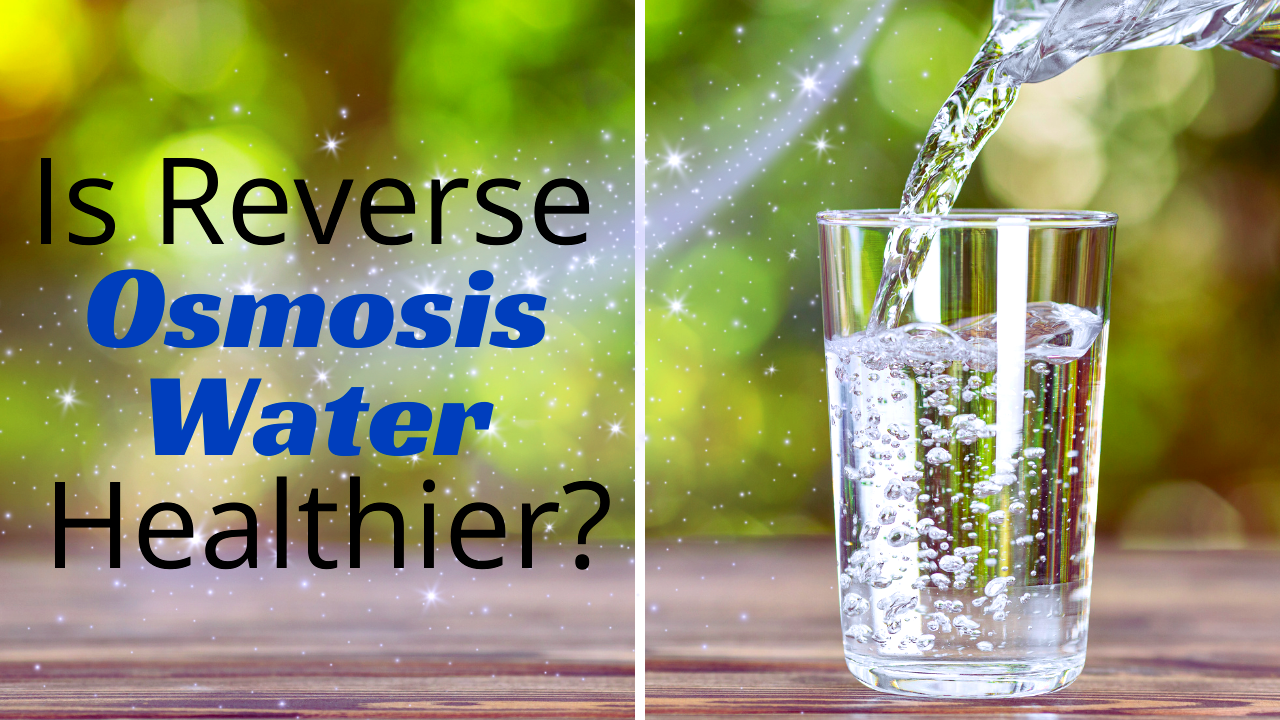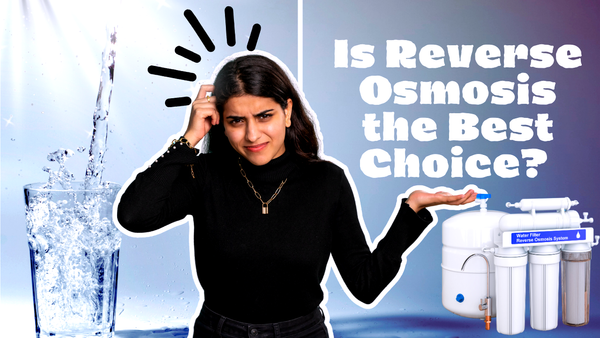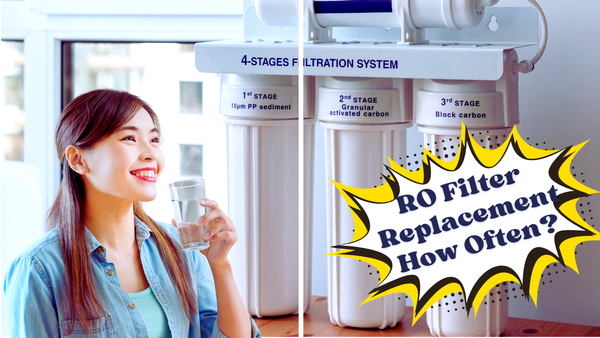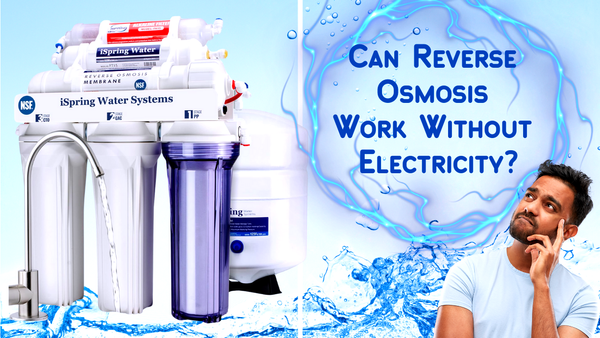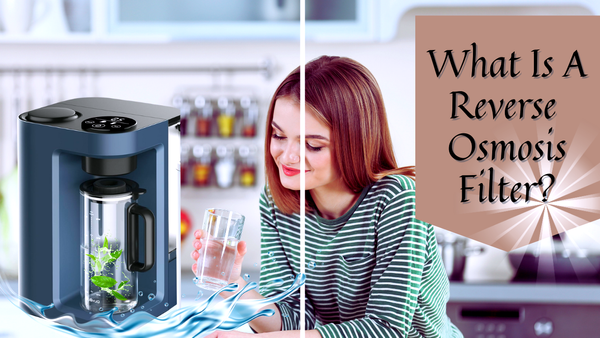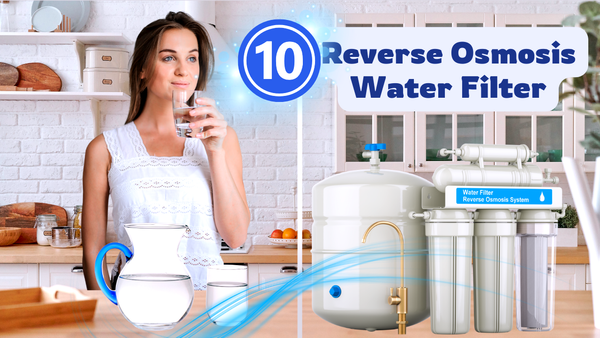Key Takeaways:
- Reverse osmosis water filters remove nearly all contaminants, providing cleaner and safer drinking water.
- While reverse osmosis systems are effective, they also remove beneficial minerals, which can be a drawback.
- Understanding the pros and cons of reverse osmosis water filtration can help you decide about your water quality.
Reverse osmosis (RO) water filtration is a popular way to purify drinking water. You may need a reverse osmosis system based on your local water quality, as it removes contaminants using a semi-permeable membrane. This process involves forcing water through a semi-permeable membrane to remove contaminants and impurities. But is RO water healthier? Let’s get into it to know the benefits and drawbacks of RO systems.
How Reverse Osmosis Works
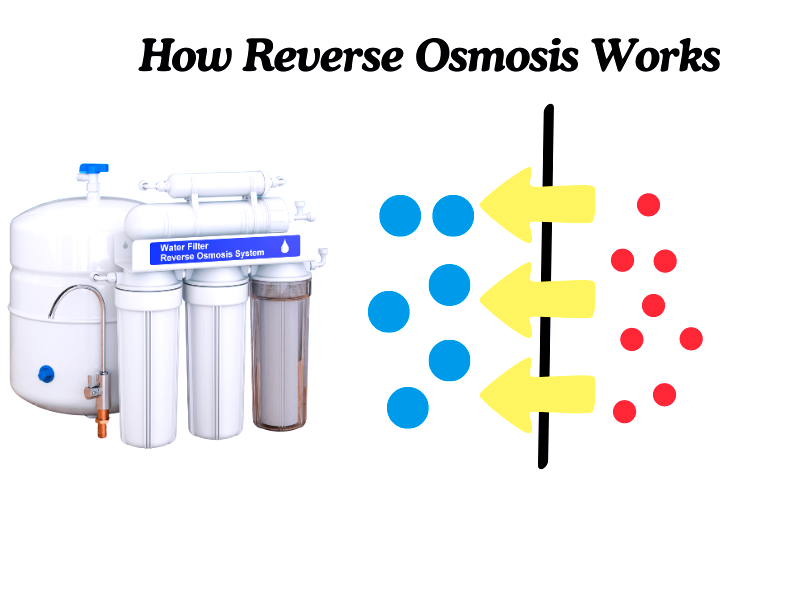
The reverse osmosis process starts with water being pushed through a reverse osmosis membrane. The membrane is the key in this process as it forces water through tiny holes, removing contaminants. This reverse osmosis membrane allows water molecules to pass through but blocks larger particles like dissolved solids, heavy metals, and harmful chemicals. The result is clean water with almost no contaminants.
Reverse osmosis systems have multiple stages of filtration. These stages often include activated carbon filters, which remove chlorine and other organic compounds, and a final polishing filter to ensure the highest water quality. The combination of these filters ensures that the water you drink is as pure as possible.
Benefits of Reverse Osmosis Water
One of the biggest benefits of reverse osmosis water filter is its purity. Reverse osmosis filters are good at removing contaminants, including heavy metals, pesticides, and residual chlorine. RO systems are good at removing contaminants, including heavy metals, pesticides, and residual chlorine. That makes RO water a safer option for drinking and cooking.
Another advantage of RO water is its taste. Many people find RO water tastes better than tap water or even bottled water. This is because the filtration process removes impurities that can affect the taste of the water. So RO water is often preferred for making coffee, tea, and other beverages.
Disadvantages of Reverse Osmosis Water
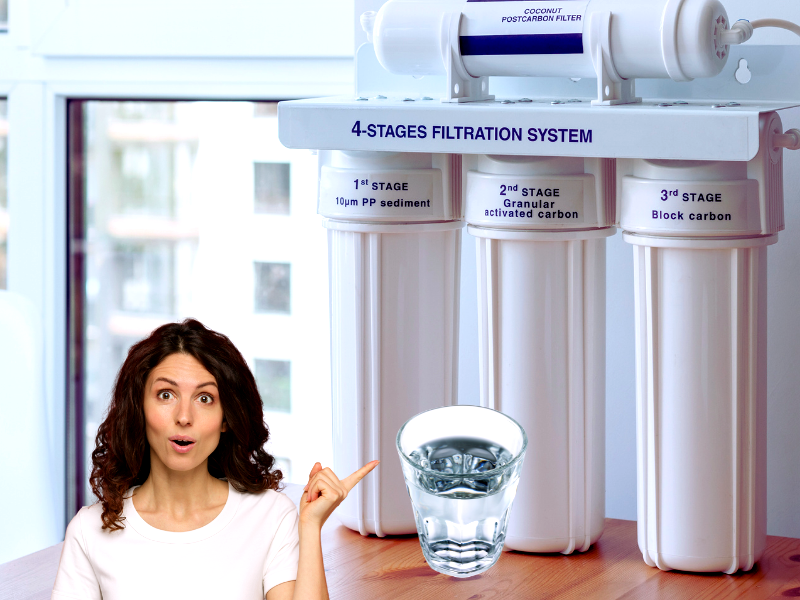
While RO water is highly purified, it has some downsides. One of the biggest is that the filtration process removes beneficial minerals like calcium and magnesium. These minerals are essential for good health, and some people may be concerned about their absence.
Another drawback of reverse osmosis systems is water waste. The process of filtering water through a semi-permeable membrane requires a lot of water, and some of it is discarded as waste. This can be a problem in areas where water conservation is important. Plus, the reverse osmosis filtration system process generates wastewater, which can be a concern for homeowners who want to improve water quality while being mindful of the environment.
Reverse Osmosis vs. Other Filtration Methods
When comparing reverse osmosis filtration systems to other water filtration methods, consider your household needs. Reverse osmosis filtration systems are good at removing contaminants compared to other filtration methods. For example, activated carbon filters are good at removing chlorine and organic compounds but not as good at removing heavy metals and dissolved solids.
On the other hand, water softeners are designed to remove minerals that cause hard water but don’t address other contaminants. Reverse osmosis systems offer a more comprehensive solution by removing a wide range of impurities, making them the popular choice for those who want the purest water.
The Role of Activated Carbon Filters
Activated carbon filters are an important part of reverse osmosis systems. These filters remove chlorine which can damage the RO membrane and affect the taste of the water. Activated carbon filters also remove organic compounds and other contaminants that may not be caught by the membrane.
By adding activated carbon filters to the reverse osmosis process the overall system is more effective. So the water you drink is not only free of harmful substances but also tastes clean and fresh.
The Importance of Water Quality
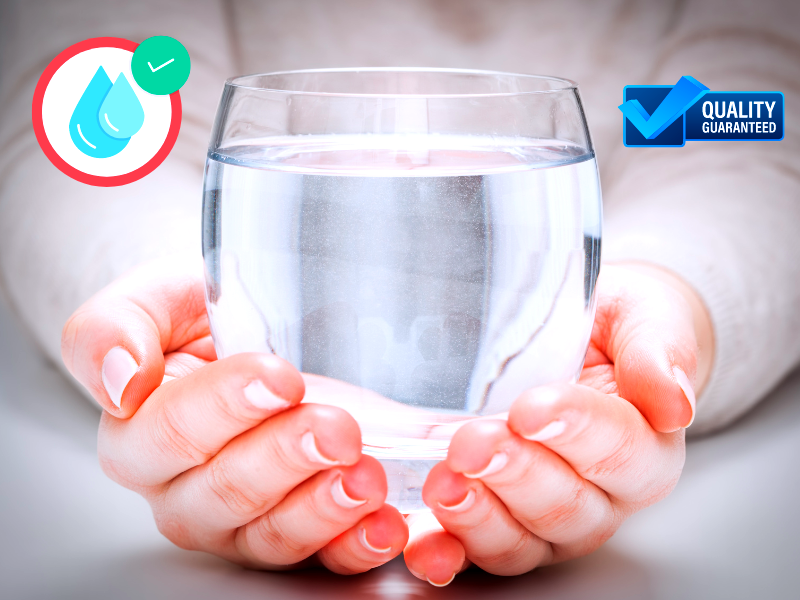
Water quality is a big concern for many households. Contaminated water can cause serious health problems including gastrointestinal illnesses and long-term health issues. Reverse osmosis water filters are a reliable solution to improve water quality and ensure your family has access to safe drinking water.
Besides removing contaminants reverse osmosis systems can also improve the taste and odor of your water. This can make a big difference in your overall drinking experience and make you drink more water which is good for your overall health.
The Impact of Reverse Osmosis on Mineral Content
One of the biggest debates about reverse osmosis water is its effect on mineral content. While RO systems remove harmful contaminants they also remove beneficial minerals like calcium and magnesium. These minerals are good for bone health, muscle function and overall well-being.
To address this issue some reverse osmosis systems have a remineralization stage. This stage adds back essential minerals to the purified water so you still get the benefits of these nutrients. If you’re concerned about the lack of minerals in reverse osmosis water consider getting a system with a remineralization feature.
Reverse Osmosis and Alkaline Water
Alkaline water has become popular for its health benefits including better hydration and better acid-base balance in the body. However, the reverse osmosis process can lower the pH of the water making it more acidic. This has raised concerns about the negative effects of drinking reverse osmosis water.
To counteract this some reverse osmosis systems have an alkaline filter that raises the pH of the water. So you can enjoy the benefits of both purified and alkaline water. If you want alkaline water look for a reverse osmosis system that has this feature.
The Environmental Impact of Reverse Osmosis

While reverse osmosis systems give you good water, they also have an environmental impact. The process of filtering water through a semi-permeable membrane requires energy and produces wastewater. This is a concern for those who want to reduce their carbon footprint.
To minimize the environmental impact consider getting a reverse osmosis system with a high recovery rate. These systems are designed to reduce water waste and be more efficient. Also, be mindful of your overall water usage and look for ways to conserve water in your daily life.
The Cost of Reverse Osmosis Systems
The cost of reverse osmosis systems can vary widely, depending on the features and complexity of the system. While some basic models are relatively affordable, more advanced systems with multiple filtration stages and additional features can be more expensive.
When considering the cost, it's essential to factor in the long-term benefits of having access to clean, purified water. Investing in a high-quality reverse osmosis system can save you money on bottled water and reduce the risk of health issues related to contaminated water.
Maintenance and Upkeep of Reverse Osmosis Systems
Maintaining a reverse osmosis system is crucial for ensuring its effectiveness and longevity. Reverse osmosis water systems require regular upkeep, including filter and membrane replacements, to ensure effective operation and water quality. Regularly replacing the filters and membranes is essential to keep the system running smoothly and to maintain water quality.
Most reverse osmosis systems come with a maintenance schedule and guidelines for filter replacement. Following these recommendations can help you avoid potential issues and ensure that your system continues to provide high-quality water for years to come.
Reverse Osmosis for Different Water Sources
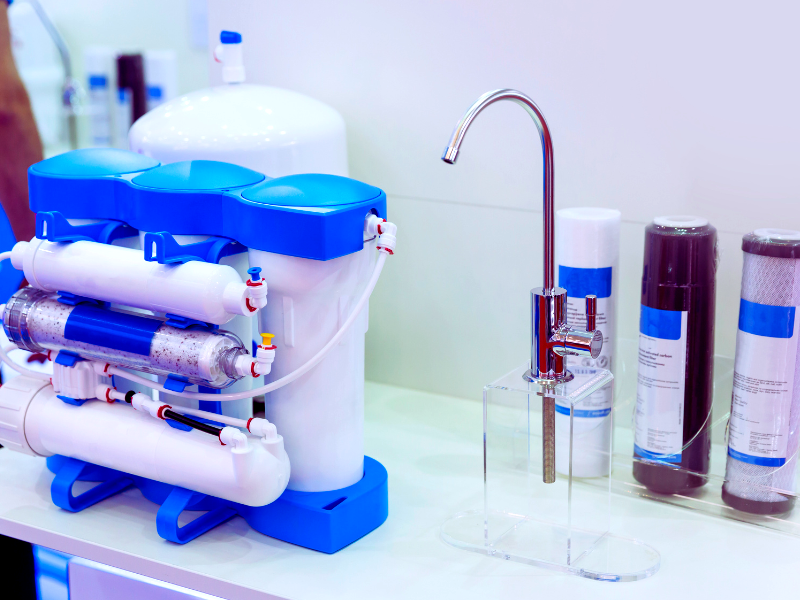
Reverse osmosis systems are versatile and can be used with various water sources, including tap water, well water, and even brackish water. These osmosis water systems offer significant advantages over traditional distillation methods, such as energy efficiency and lower operational costs. The effectiveness of the system may vary depending on the quality of the source water and the specific contaminants present.
For households with well water, a reverse osmosis system can be particularly beneficial, as it can remove a wide range of contaminants that may be present in groundwater. Similarly, for those using tap water, an RO system can provide an extra layer of protection against potential pollutants.
The Role of Reverse Osmosis in the Water Treatment Industry
The water treatment industry relies heavily on reverse osmosis technology for various applications, including desalination, wastewater treatment, and industrial processes. The ability of reverse osmosis to remove a wide range of contaminants makes it a valuable tool in ensuring water quality and safety.
In addition to residential use, reverse osmosis systems are also used in commercial and industrial settings to provide high-quality water for various purposes. This highlights the versatility and effectiveness of reverse osmosis technology in addressing different water treatment needs.
Reverse Osmosis and Bottled Water
Many people turn to bottled water as a convenient source of clean drinking water. However, bottled water can be expensive and environmentally harmful due to the plastic waste it generates. Reverse osmosis systems offer a more sustainable and cost-effective alternative to bottled water.
By investing in a reverse osmosis system, you can enjoy the convenience of having purified water at home without the need for plastic bottles. This not only saves you money but also helps reduce your environmental impact.
The Future of Reverse Osmosis Technology
As technology continues to advance, reverse osmosis systems are becoming more efficient and user-friendly. Innovations in membrane technology and filtration processes are improving the performance and reliability of these systems.
In the future, we can expect to see even more advanced reverse osmosis systems that offer enhanced water quality, reduced water waste, and greater energy efficiency. These advancements will make reverse osmosis an even more attractive option for households and industries alike.
Choosing the Right Reverse Osmosis System
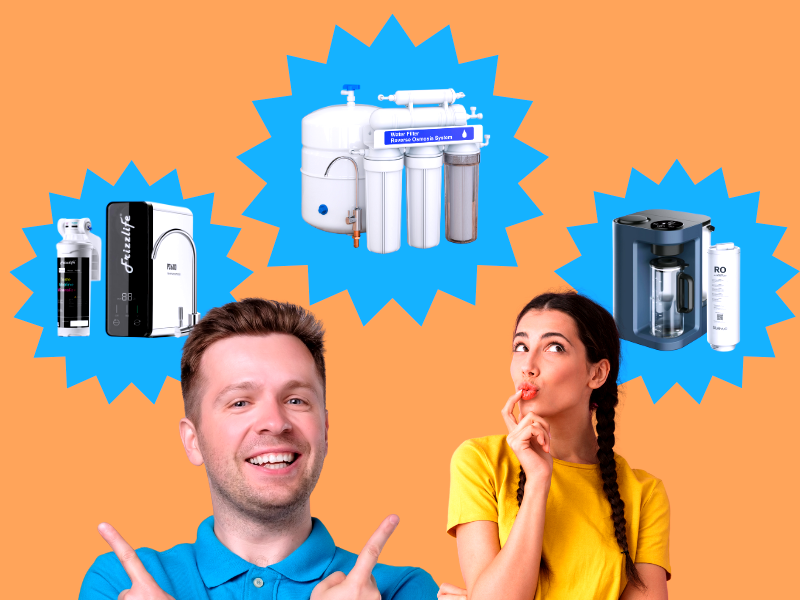
When selecting a reverse osmosis system, it's essential to consider your specific needs and preferences. Factors such as water quality, budget, and desired features should all be taken into account.
Researching different models and reading customer reviews can help you make an informed decision. Additionally, consulting with a water treatment professional can provide valuable insights and recommendations based on your unique situation.
The Health Benefits of Drinking Reverse Osmosis Water
Drinking reverse osmosis water can offer several health benefits, including reduced exposure to harmful contaminants and improved hydration. The removal of impurities ensures that the water you consume is clean and safe, which can contribute to better overall health.
While the lack of beneficial minerals in reverse osmosis water is a concern, this can be addressed by using a remineralization filter or by ensuring that you get these minerals from other dietary sources. By taking these steps, you can enjoy the health benefits of purified water without compromising on essential nutrients.
Addressing Common Concerns About Reverse Osmosis Water
There are several common concerns about reverse osmosis water, including its impact on mineral content and potential environmental effects. Understanding these concerns and addressing them can help you make an informed decision about whether reverse osmosis is the right choice for your household.
By choosing a system with a remineralization filter and being mindful of water usage, you can mitigate some of the potential drawbacks of reverse osmosis water. Additionally, staying informed about advancements in reverse osmosis technology can help you take advantage of new features and improvements.
Summary
Reverse osmosis water filters offer a highly effective solution for providing clean and safe drinking water. While there are some drawbacks, such as the removal of beneficial minerals and water waste, these can be addressed with the right system and practices. By understanding the benefits and potential concerns of reverse osmosis water, you can make an informed decision about the best water filtration system for your needs. To keep up with the latest water filter tips and offers, subscribe to our newsletter today!
FAQ
Does reverse osmosis remove all contaminants from water?
Reverse osmosis is very effective in removing a wide range of contaminants, including heavy metals, pesticides, and residual chlorine. However, it may not remove some volatile organic compounds (VOCs) and some bacteria. You need to use a multi-stage filtration system to have comprehensive water purification.
How often should I replace the filters in my reverse osmosis system?
Filter replacement depends on the system and the quality of your source water. Pre-filters and post-filters should be replaced every 6-12 months, and the RO membrane every 2-3 years. Always follow the manufacturer's maintenance instructions.
Can I use reverse osmosis water for cooking and other household uses?
Yes, reverse osmosis water is good for cooking, making beverages, and other household purposes. Its purity will make food and drinks taste better and safer for water-consuming activities.
